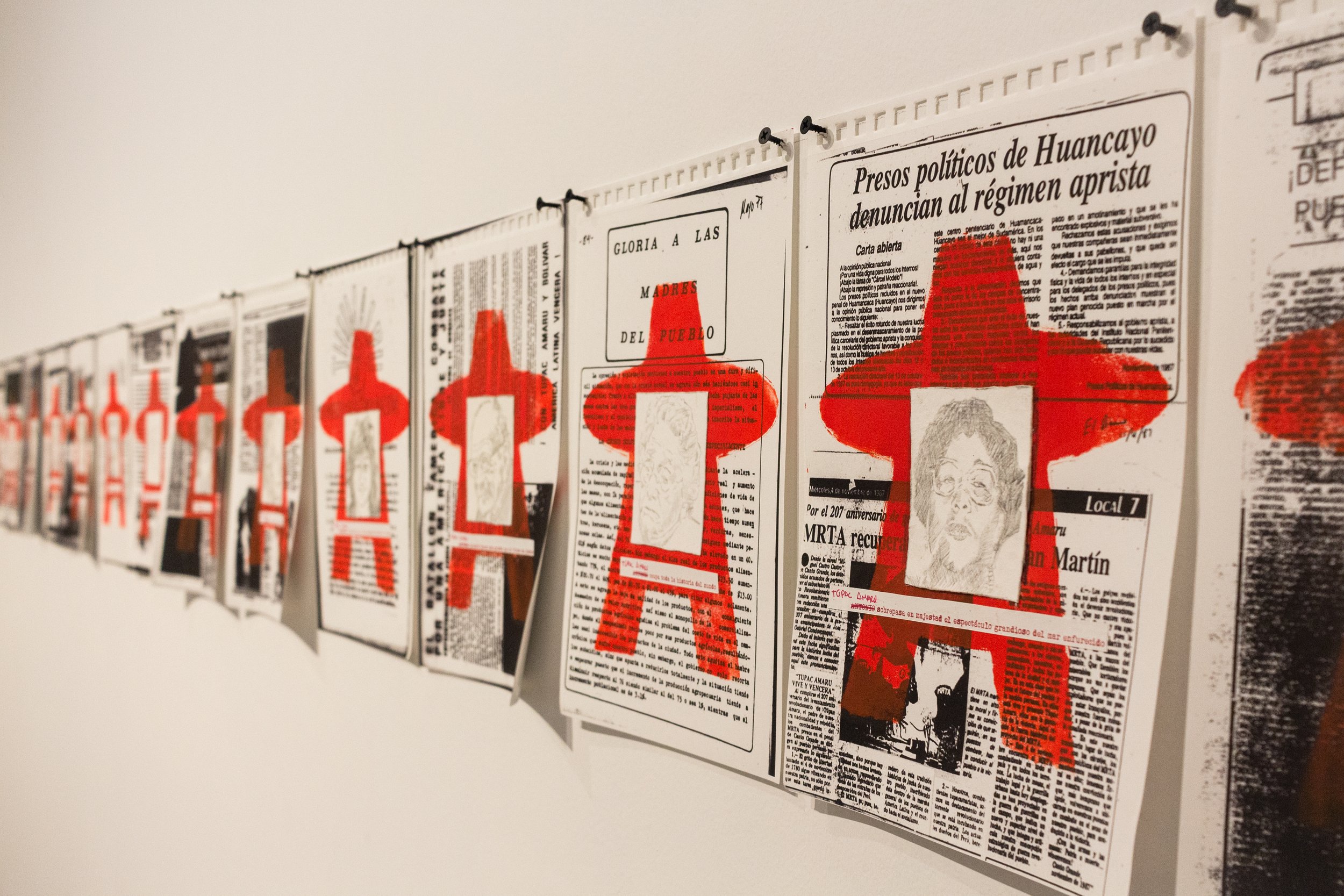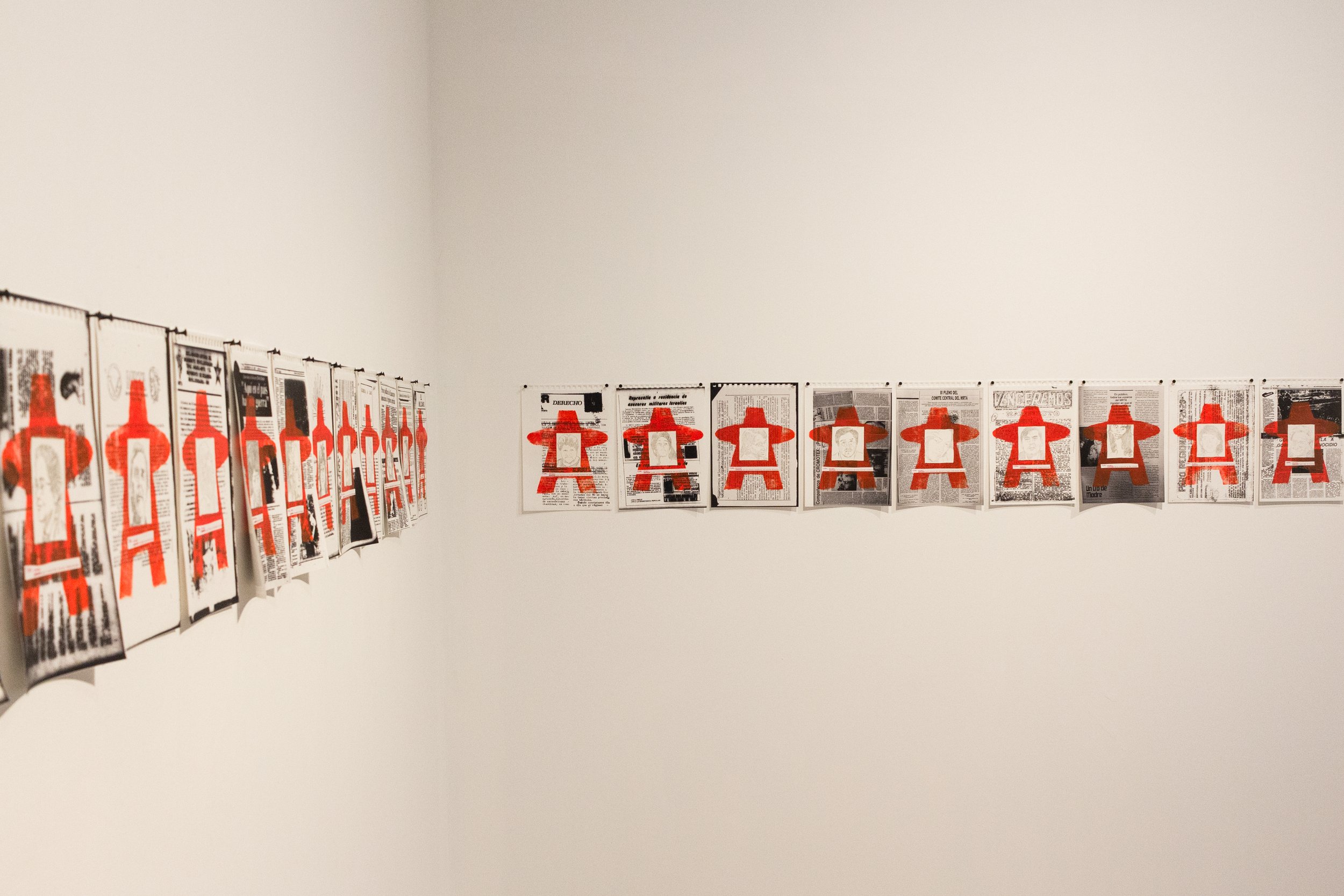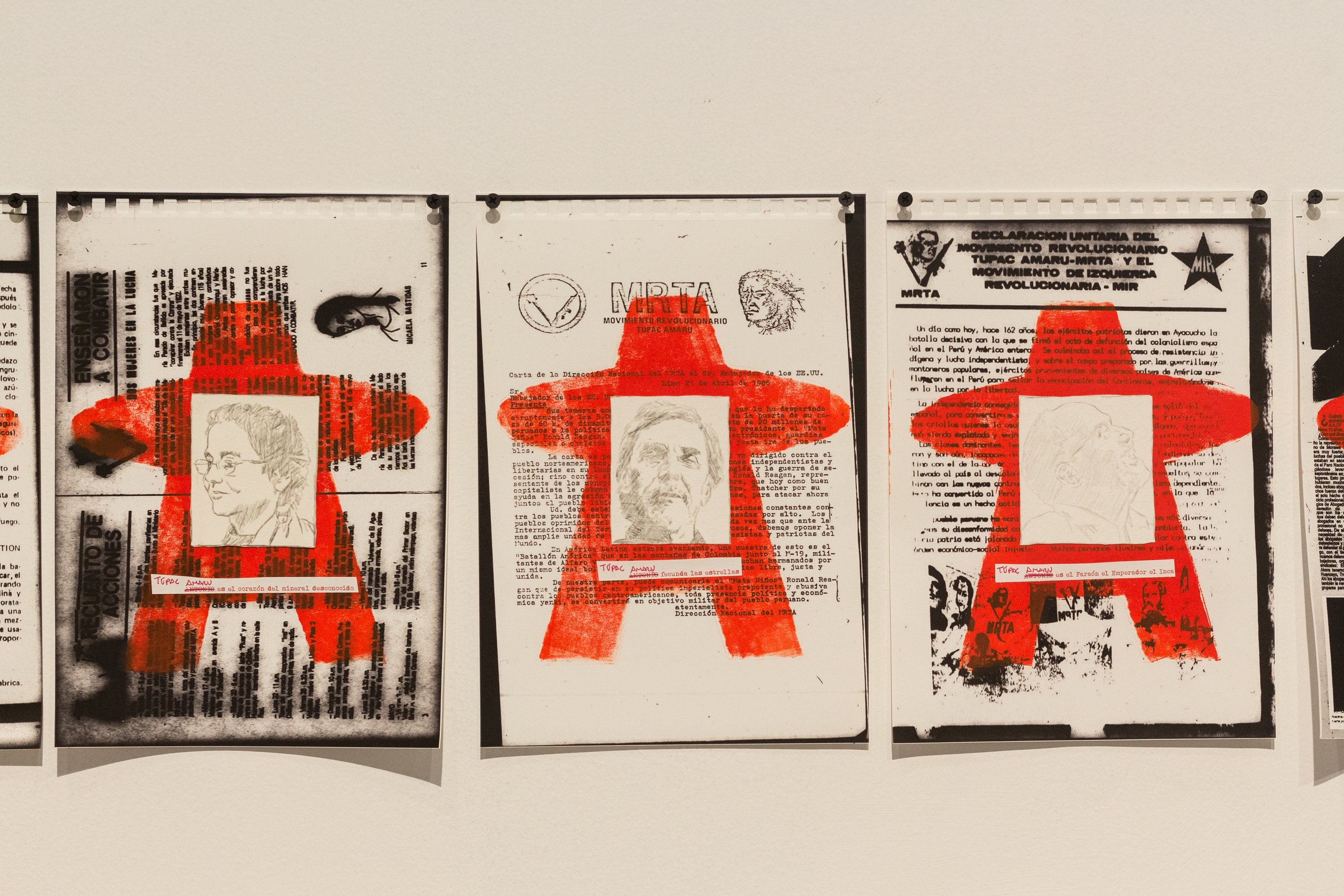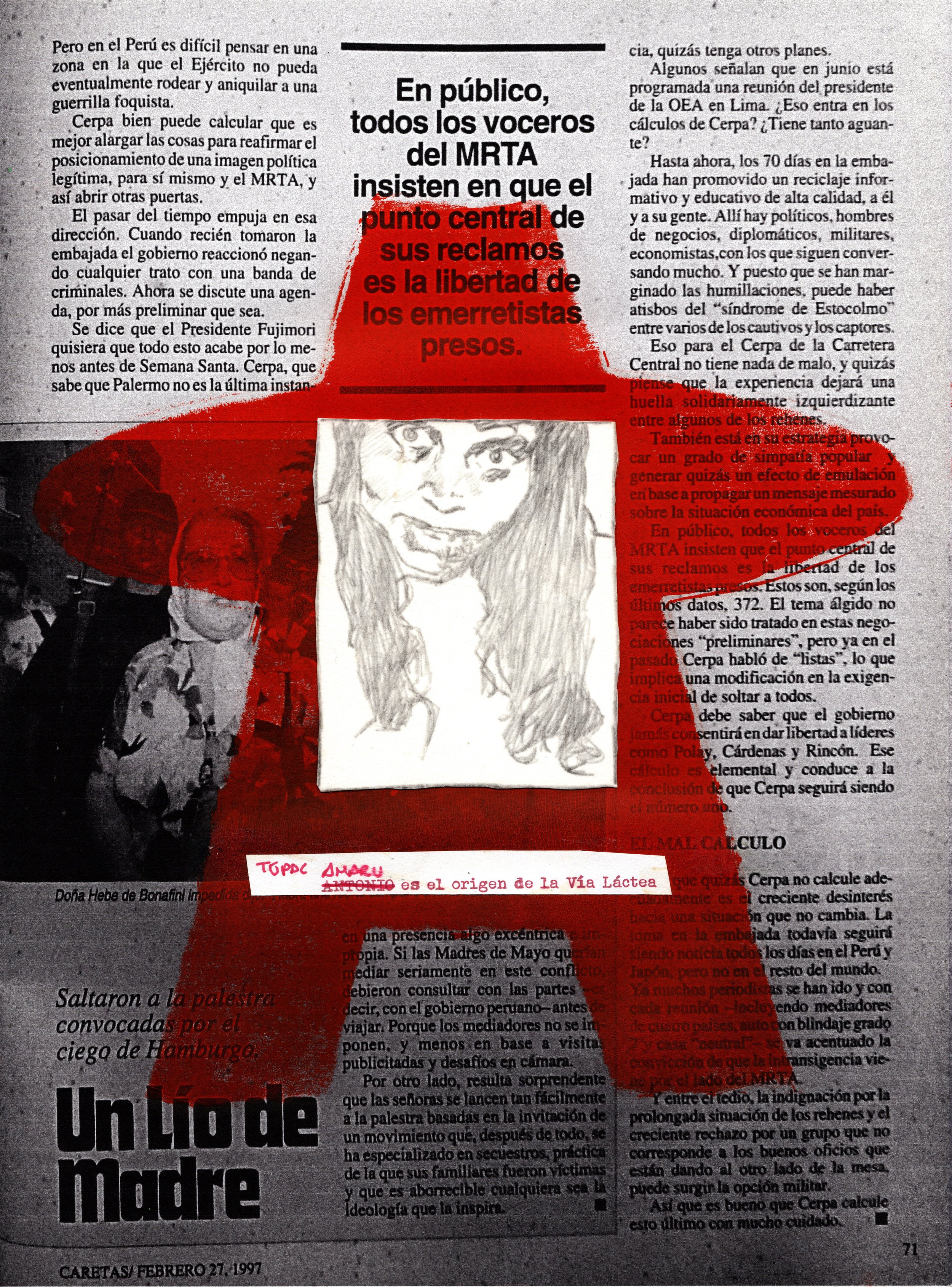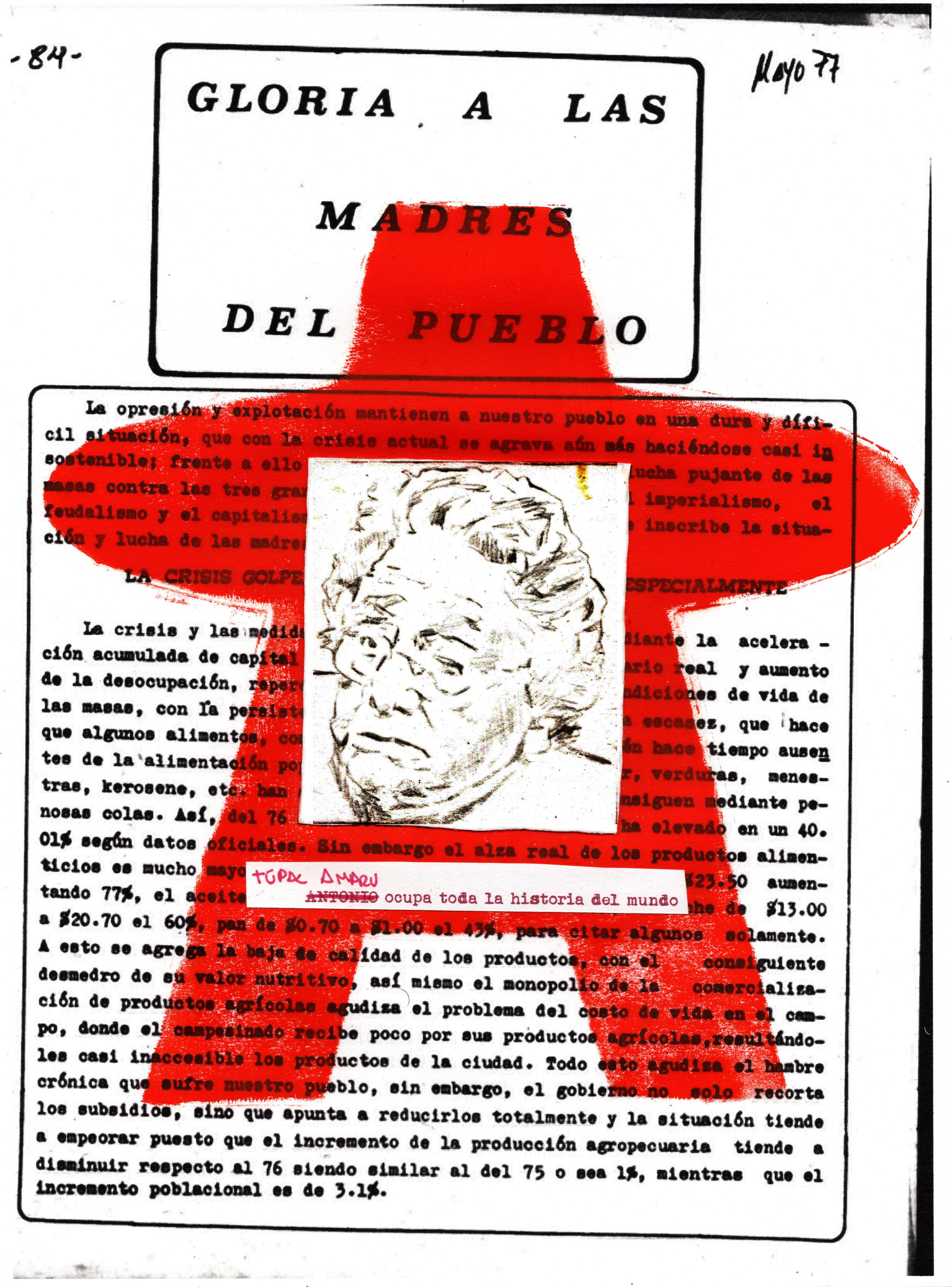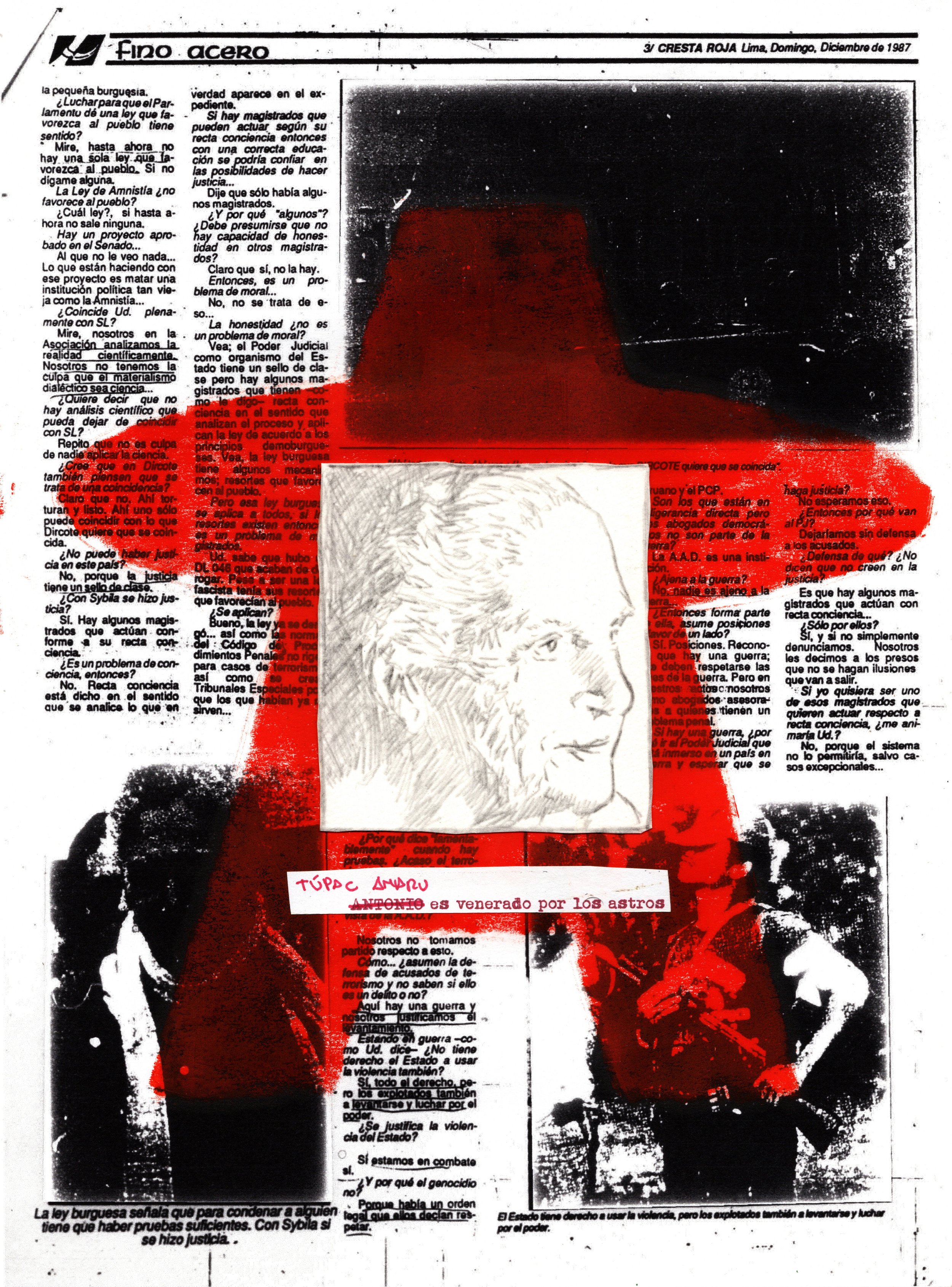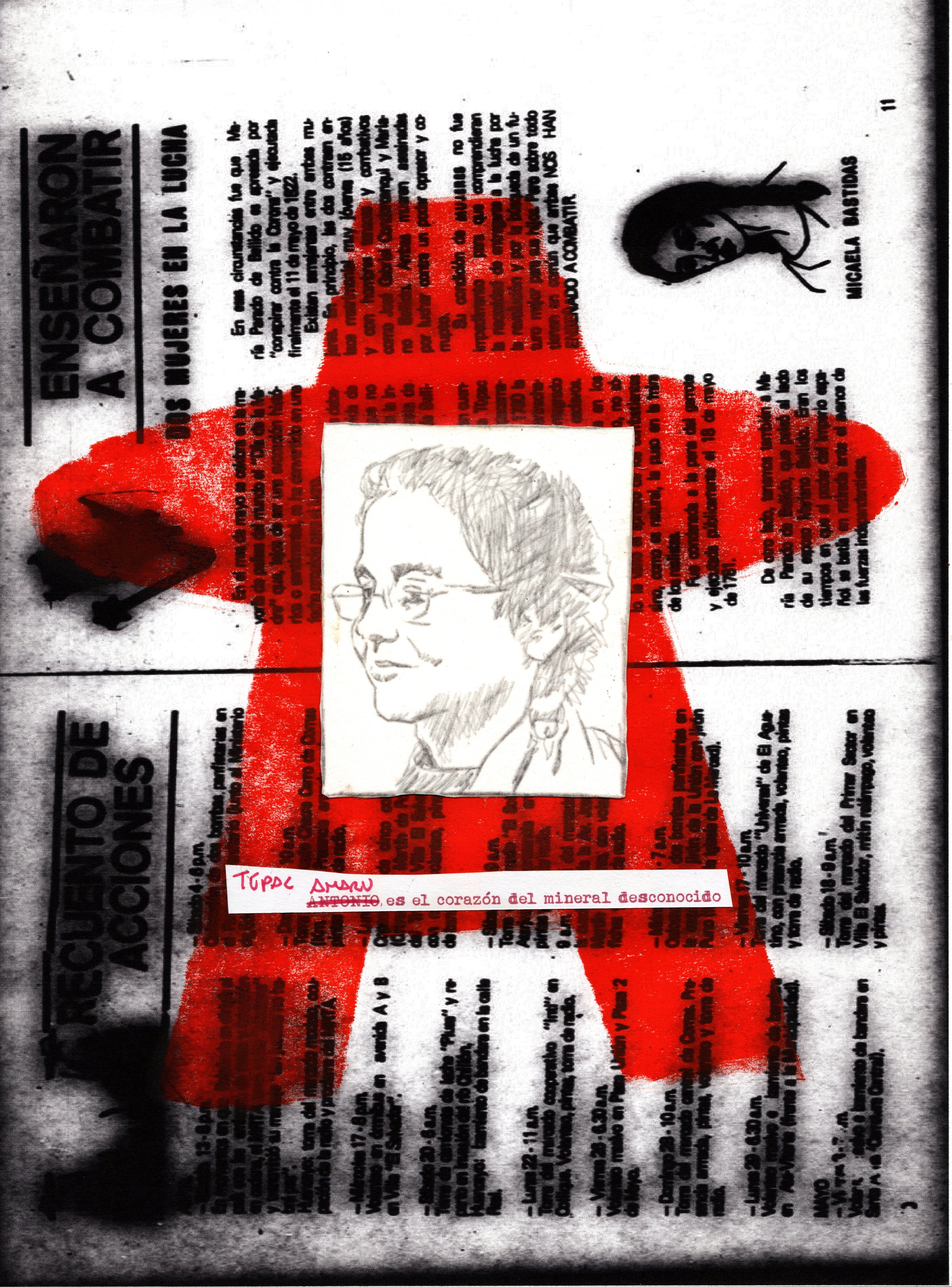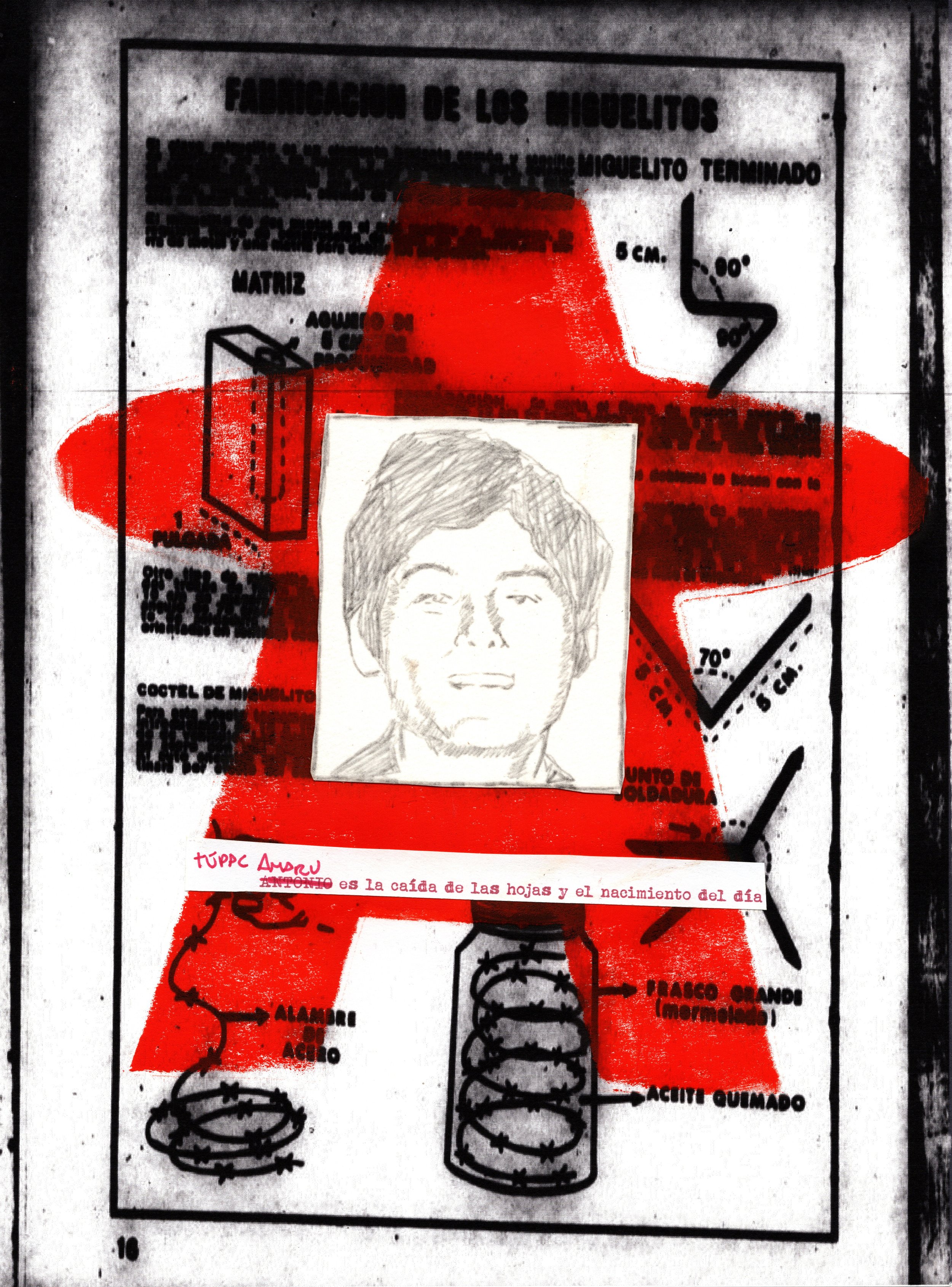Túpac Amaru es Dios (primera versión)
Los elementos que componen esta obra emergen de una relectura íntima y política del poema Antonio es Dios de César Moro, intervenido para sustituir el nombre del amante por el de Túpac Amaru. Esta operación traslada el deseo erótico hacia un símbolo revolucionario, tensionándolo al sobreimprimir, sobre la silueta diseñada por Jesús Ruiz Durand —que idealiza al líder como ícono cívico y ciudadano—, retratos de figuras vinculadas a movimientos subversivos peruanos entre los años 80 y 2000. La obra se despliega como un palimpsesto visual: documentos, panfletos y archivos emitidos por grupos armados que confrontaron al Estado peruano sirven de soporte a esta cartografía afectiva y conflictiva. Aquí, el cuidado y la devoción del poema original chocan con las huellas de una violencia histórica, mientras los rostros de lxs “indeseables” —marginadxs por su pasado político— reclaman su lugar en un relato nacional fracturado.
La silueta de Ruiz Durand, asociada a un Túpac Amaru domesticado por el imaginario oficial, actúa como espejo de las contradicciones entre lo deseable y lo condenado. Los trazos que dibujan a lxs subversivxs emergen como cicatrices que interrogan la memoria colectiva y los límites de la ciudadanía. La obra oscila entre el manifiesto y el ritual íntimo, entre archivo y poema, entre el cuerpo revolucionario que se anhela y el que se excluye. No hay reconciliación en esta fricción: solo un amor político que exhibe su herida, su rabia y su imposibilidad de ser enteramente legítimo. Así, la pieza no solo cuestiona los relatos hegemónicos, sino que expone cómo lo “cívico” se construye sobre el borramiento de quienes disputaron, con las armas y las ideas, el derecho a existir en la historia.
Ficha
Inyección de tinta, acrílico, tinta roja y grafito sobre papel 29,7 x 21 cm c/u (21 hojas)
Exhibiciones
SUBSUELO 2024
Túpac Amaru Is God (First Version)
The elements that make up this work arise from an intimate, political rereading of César Moro’s poem “Antonio Is God,” intervened so that the lover’s name is replaced with that of Túpac Amaru. This operation transfers erotic desire onto a revolutionary symbol, intensifying it by overprinting—upon the silhouette designed by Jesús Ruiz Durand, which idealizes the leader as civic icon—portraits of figures tied to Peruvian subversive movements from the 1980s through the 2000s. The piece unfolds as a visual palimpsest: documents, pamphlets, and archives issued by armed groups that confronted the Peruvian state become the substrate of this affective, conflict-laden cartography. Here, the care and devotion of the original poem clash with the traces of historical violence, while the faces of the undesirables—marginalized for their political past—claim their place in a fractured national narrative.
Ruiz Durand’s silhouette, linked to a Túpac Amaru domesticated by official imagination, acts as a mirror of the contradictions between what is desired and what is condemned. The strokes that trace the subversives surface like scars, interrogating collective memory and the borders of citizenship. The work oscillates between manifesto and intimate ritual, between archive and poem, between the revolutionary body that is yearned for and the one that is cast out. There is no reconciliation in this friction—only a political love that exposes its wound, its fury, its impossibility of becoming fully legitimate. Thus the piece not only questions hegemonic narratives; it also lays bare how the “civic” is constructed atop the erasure of those who, through weapons and ideas alike, fought for the right to exist in history.
Specifications
Inkjet, acrylic, red ink and graphite on paper 29.7 × 21 cm each (21 sheets)
Exhibitions
SUBSUELO 2024


